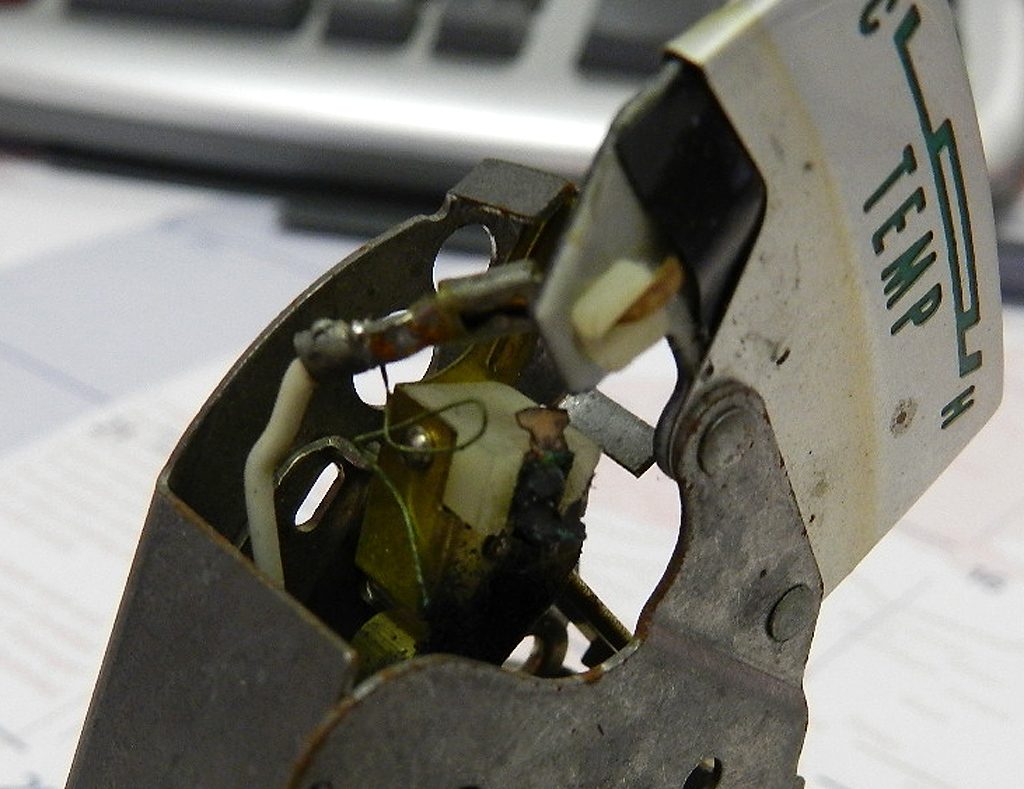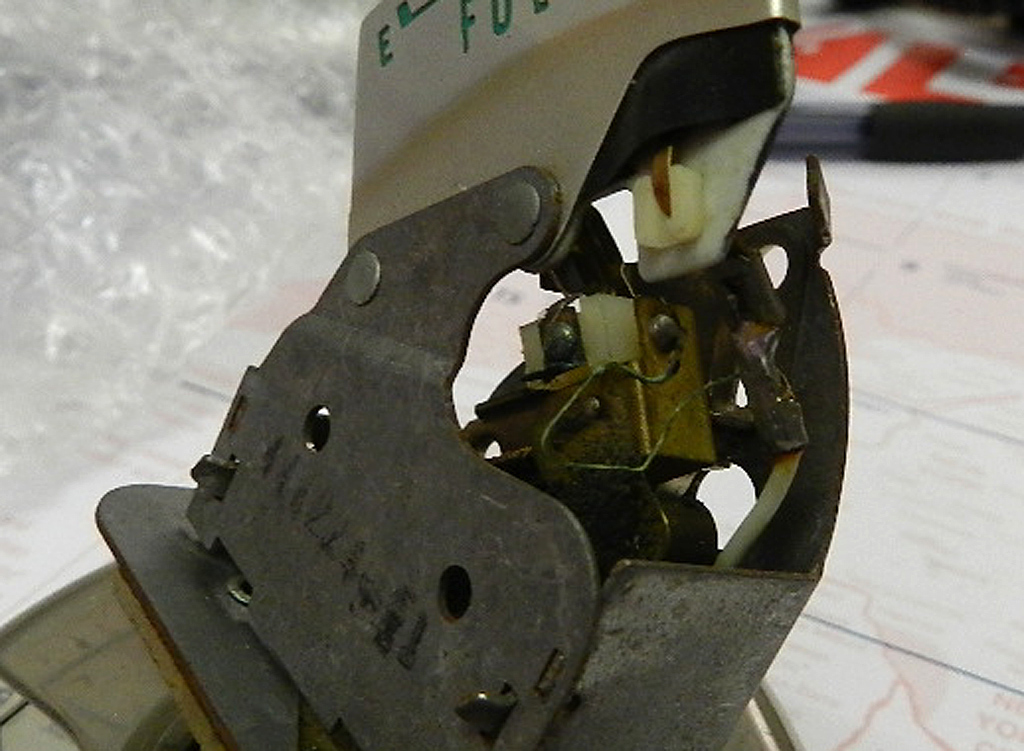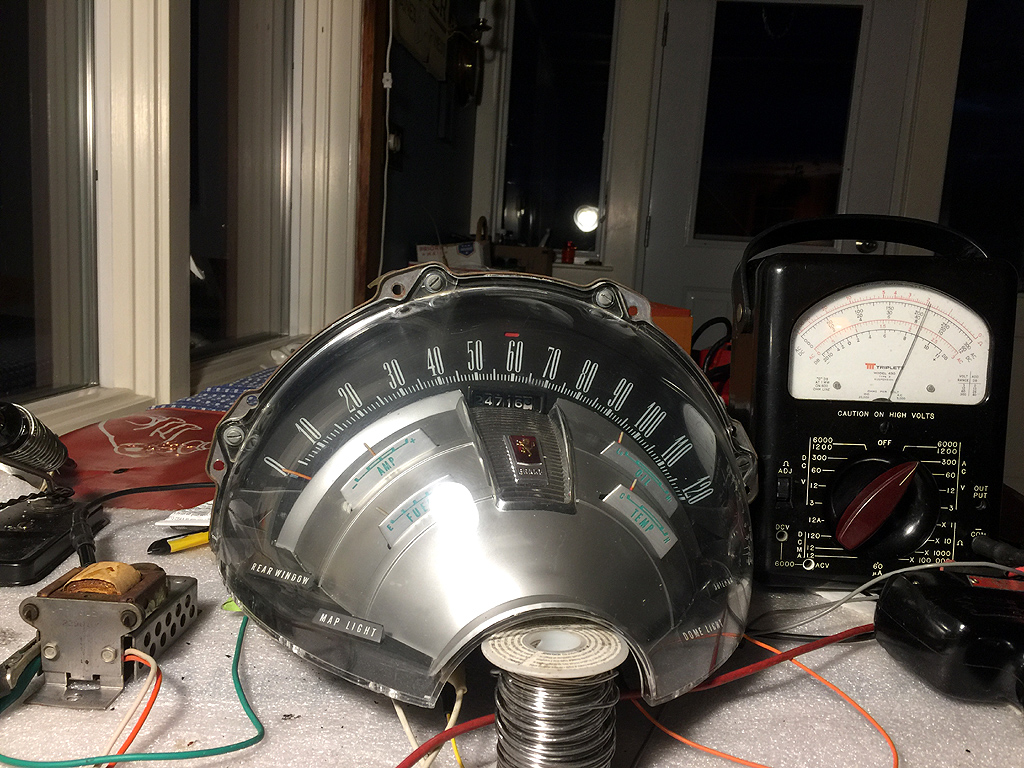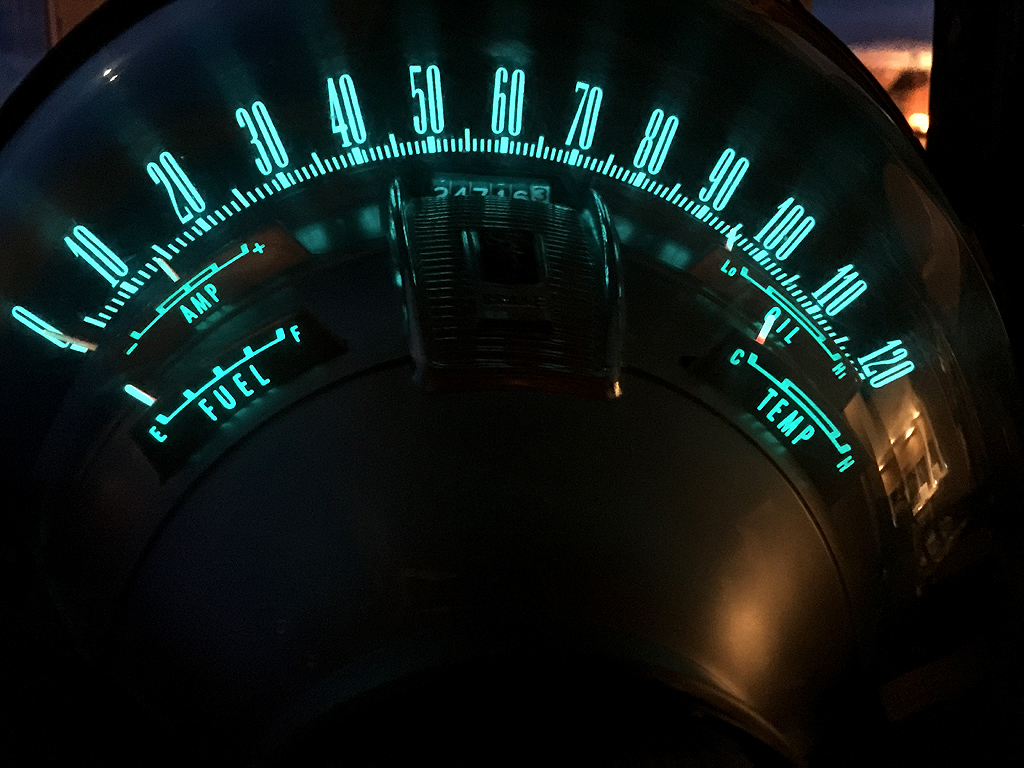Gauge Repair
John Grady talks about working on the electroluminescent gauges

The wire at photo center is broken.

To get the needles to light up, I often find the tiny wire to the needle has broken. To repair, I tried 32 gauge "Litz " wire, which is made of many stands. It may be better for flex but it is near impossible to solder. So I use 32 gauge Magnet wire.
Magnet wire has a coating, like a tough clear paint which acts as insulation when used in winding a motor. They make triple coated magnet wire and this is probably better but I do not have any. The stuff I have is "solderable". You tin an end first by sticking in melted solder. It burns off the coating clean and avoids nicking wire (it will break at a nick).
The little brass tab in front needs to be thoroughly cleaned. Scrape the face gently till shiny with a small razor knife point. Then you need to “tin it” with solder. To get a dot of solder on the face of brass tab use a small iron or I like the 140 W Weller gun -- it will not overheat with the trigger control. You have to do this fast or you can melt plastic part behind it. Once you have the dot and a tinned magnet wire end, tinned about 1/8”, touch the wire - soldering gun - and tab all at once and
the wire locks on in a half second without melting.
I make the loop in the wire a lot longer than original so it does not drag.
5 Volts on gauge pin to other terminal will make a gauge move full scale. A 6 volt lantern battery
can be used here to check for full scale travel and verify the new wire is not hanging up somewhere.
It is very important that the cluster is well grounded. If no ground, the voltage limiter stays at 12 volts and will burn up all the gauges. It is a good idea to run new wire from one of gauge mount screws to a solid ground on car dash.
On the voltage limiter, I have installed electronic limiters in some but the stock thermal limiter is good. You can see the flashing when it is working. Average of 12 V flashes is 5 volts.
As far as painting the needles, the paint can block the light coming off the needle. While the paint makes it look great in daylight, at night the needle is too dark to see. It appears factory left the orange coating off the tip on purpose with this in mind.


|